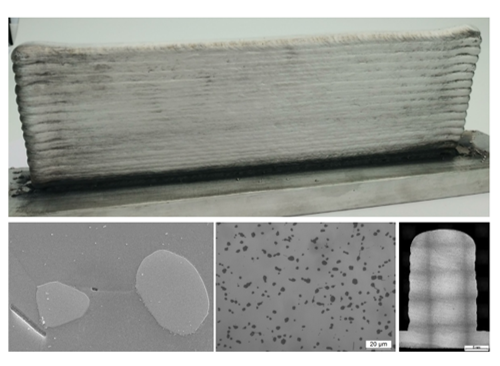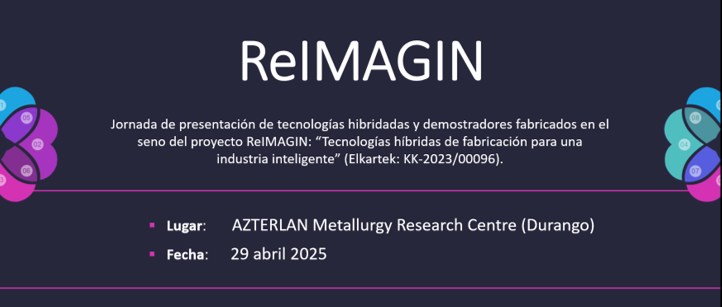The IMAGINE project team, led by the AZTERLAN Metallurgy Research Centre, develops hybrid processes of casting, ablation, forging, stamping, additive manufacturing, and welding technologies that will allow “to develop components of complex geometries and specific characteristics, at more competitive costs”. Currently, the team is working on the manufacture and characterization of the first test parts that “will validate and optimize the technological proposals made”.
After selecting the designs that will shape the first demonstrators and designing their manufacturing parameters using hybrid technologies, the IMAGINE team is currently characterizing the first test parts obtained through the hybridization of technologies 1) casting and additive manufacturing and 2) forging and additive manufacturing.
In the case of the demonstrators developed, as explained by the AZTERLAN researcher PhD. Ana Isabel Fernández Calvo, “they are hybrid parts manufactured in the same material in which we seek to ensure that the two hybridized technologies offer the same metallurgical properties and that the points of union between both technologies do not present weak points”.
Regarding the hybridization of foundry and additive manufacturing technologies (laser wire and WAAM), the team has recently shared at the ICWAM 2022 congress (International Congress on Welding, Additive Manufacturing and associated non-destructive testing) the first results obtained with the AlSi7Mg0.6 alloy. “Once the characterization of this first demonstrator has been completed, we have verified that the results obtained are positive and that the union point of both processes is not the weakest point of the manufactured element”. In this hybrid process, “by combining the same material in a single piece, we seek to achieve certain properties and qualities by optimizing the manufacturing time and materials”. For this purpose, “the fundamental aspects to work on have been the elimination of porosity and cracking, the maximization of the deposition rate, achieving a stable growth, optimizing excess cladding to avoid machining operations as far as possible, obtaining a fine microstructure and minimizing anisotropy”.

Also, considering the benefits of powder additive manufacturing, in the case of hybridization of additive technologies with forging technologies, the team has redesigned the demonstrators adapting them to the two technologies used (LMD and L-PBF). “The new designs that have been proposed combine functionality and weight lightening. To this end, they are based on the use of reticular and organic structures (in the case of L-PBF technology)”.

Hybridization with additive technologies presents “promising benefits” for sectors such as aeronautics or automotive thanks to the “oportunities the offer to lighten structures or to search for new functionalities such as, for instance, areas of addition with materials of greater performance or finishes, among others”.
In addition to these demonstrators, the research team continues to work on the development of the hybridization demonstrators for 3) LBW (laser welding) and stamping technologies, and 4) Ablation (also HydroSolidification) and forging technologies. Recently, two contributions have been presented on advances regarding the LBW + stamping working line at the LANE congress, held in September 2022.
The IMAGINE project consortium is participated by 4 technology centres, 2 universities and 2 R&D business units, which gather complementary and benchmark areas of expertise in the field of advanced manufacturing in the Basque Country: The BRTA members AZTERLAN (project leader), CEIT, LORTEK, and TEKNIKER, the EIPC RESEARCH CENTER and FUNDACIÓN CIE I+D+i, the Department of Mechanical Engineering of THE UPV/EHU and the Research Group of Advanced Processes of Forming of Materials of MGEP. The project also has the collaboration of an Industrial Contrast Committee formed by leading companies from the Basque Country with experience and manufacturing capabilities in one or more of the technologies under hybridization study.
With an estimated duration of two years, the IMAGINE project, Manufacturing for Intelligent Industry, is funded by the Department of Industry of the Basque Government through the Collaborative Research Aid Program in strategic areas – Elkartek Program, under the reference KK-2021/00120. It is a strategic bet by all the consortium members, which show “completely aligned with the significant potential of technological development and application that the results of IMAGINE can offer us”.


